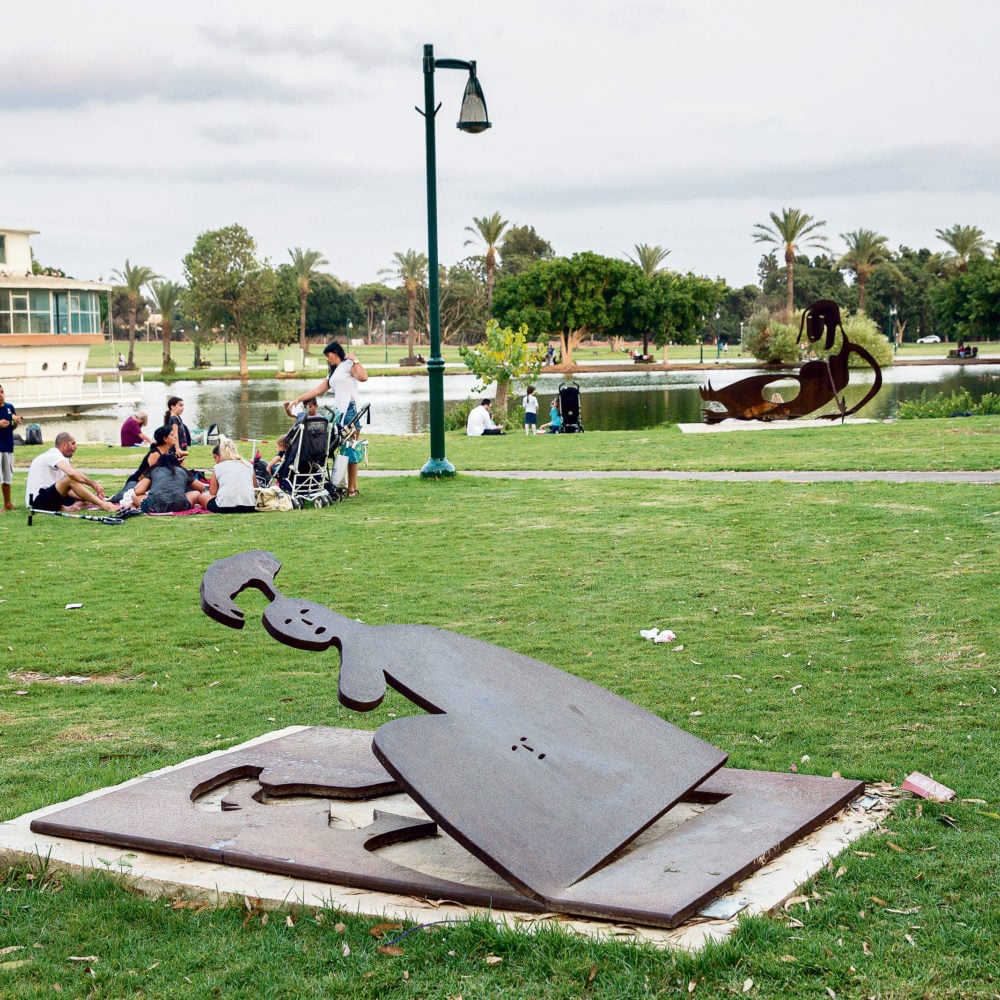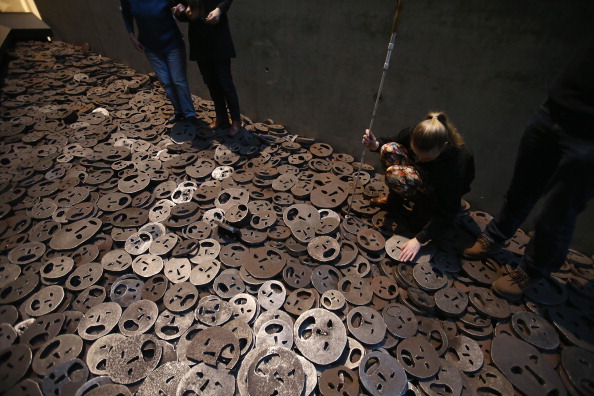Art World
Why Are Young Women Flocking to Menashe Kadishman’s Unusual Public Sculpture?
This may be a first for a contemporary artwork.

This may be a first for a contemporary artwork.

Hili Perlson

A strange custom has spread among the Orthodox Jewish community of Israel. Young women have been reportedly flocking to the Ramat-Gan National Park, in the suburb of Tel Aviv, where sculptures by Menashe Kadishman—one of Israel’s most notable artists, who passed away in May of last year—have been installed about two months ago.
The six newly-added sculptures belong to a series of works titled “Birth,” and are a long-term loan by the late artist’s children. The park has long been proud of its collection of public works by Kadishman, the largest in Israel, which now boasts some 14 steel sculptures.
One of the artworks in question is also titled Birth, and shows an abstract figure which appears to be pregnant. Another sculpture shows a round hollow in its center, where the womb would be. In recent weeks, visitors were stunned to see Orthodox women sitting on the sculptures or lying flat on their surfaces while citing psalms.
When questioned by passersby about their bizarre behavior, the religious women explained that the sculptures possess mystical qualities, and that women who come in contact with them will become more fertile and will be blessed with easy labor.
Such superstition is not uncommon within some Orthodox communities, but it is likely the first time that a contemporary art work has been declared a conduit of such qualities.

Fallen Leaves by Menashe Kadishman at the Jewish Museum Berlin. Photo by Sean Gallup/Getty Images
The city of Ramat-Gan has issued a statement calling on citizens to not interact with the sculptures in such intimate manner. “We inform the public that the sculptures do not possess any mystic qualities; they are works of art, just like the other sculptures in the park,” said deputy mayor Adva Pollack in a statement translated by artnet News. “We invite the public to enjoy the artworks but not to straddle them.”
“Kadishman wanted to make his artworks publicly accessible,” Pollack told Ynet News, “The direct contact the public can enjoy with the sculptures in the park is a unique experience, but this is not the kind of contact we had in mind.”
This isn’t the first time that Kadishman’s public artworks have taken on new contexts. Last year, the mayor of the city of Tel Aviv launched a city-wide campaign to raise awareness of breast cancer and ordered a hot-pink bra on two of the three circles that make up the 50-foot steel statue Hitromemut (Uprise) by the late Israeli sculptor and painter.